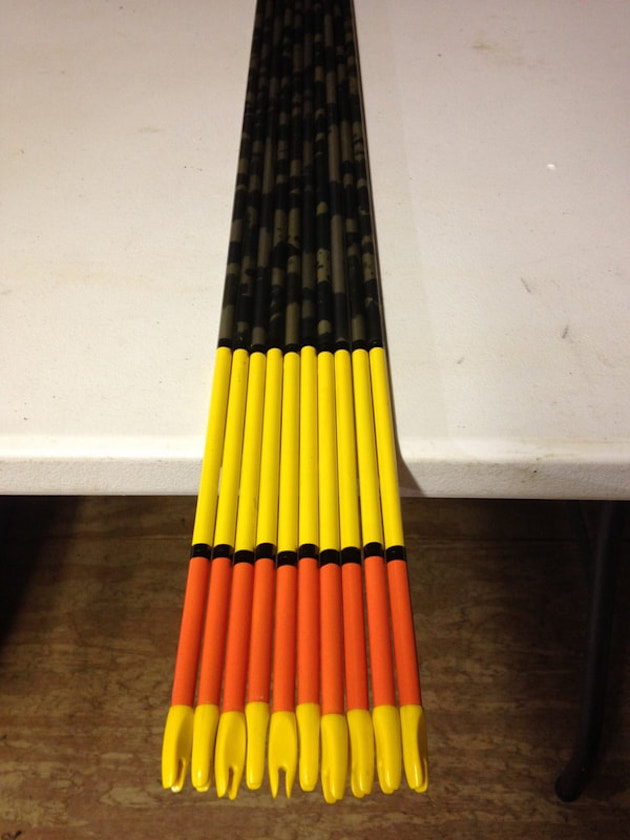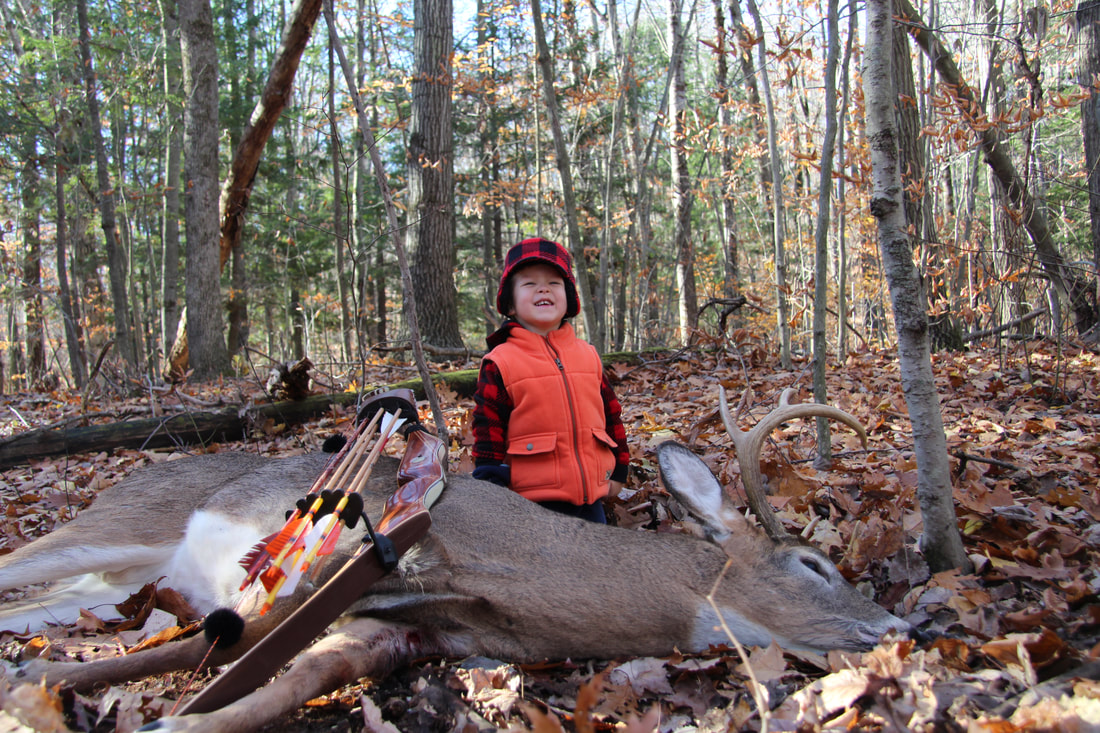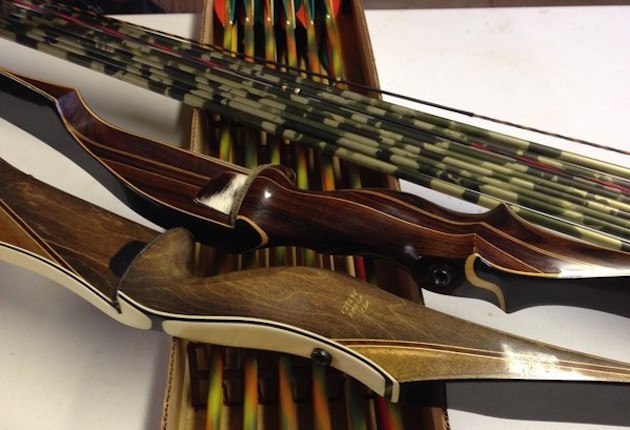One of my favorite aspects of hunting is the preparation. It’s this investment in our craft that gives genuine meaning to the act of hunting and, when we choose to do it, taking an animal’s life. Killing without rationale, physical preparation, and emotional investment is a betrayal of our own spirit. Such an act can only leave us hollow and unsure about the integrity of our own pursuit. I especially enjoy scouting to immerse myself in a new area, tuning a bowhunting setup, and, of course, the ritual of making arrows.
I have struggled with choosing an arrow shafting material for my upcoming moose hunt in Newfoundland. My first instinct was to build a matched set of ash or hickory arrows, as there is nothing more classic than Mother Nature’s own creation. But then I thought perhaps something vintage, but synthetic, was appropriate. The arrow du jour of the 1970s was aluminum, so eventually I settled on Easton XX75 2117s. Though these are still made, I couldn’t bring myself to buy them new—that would be heretical to The Classic Year’s retro philosophy!
Now, what classic broadhead would go nicely with these “beer can” arrows? Craigslist and The Eastern Traditional Archery Rendezvous in Coudersport, Pennsylvania, brought the answer and more.
In early July I found a dozen ’70s-era custom cedar arrows outfitted with vintage Bear Razorheads on Craigslist, and at the ETAR trading blanket I picked up a dozen used, but in excellent condition, 2217 shafts. The cedars from Craigslist were too weak for my 55-pound Kodiak, but remounting the razorheads on the 2117s, with a little added weight, would make a fine moose arrow.
ETAR held another surprise. I was able to trade a 1971 Damon Howatt Hi-Speed for a 55-pound 1974 Damon Howatt Super Diablo, giving me a fine backup to the Super Kodiak. With just eight weeks until “wheels up” for Deer Lake, Newfoundland, things were coming together.
Bareshaft testing with both the Super K and Super D resulted in a 28½-inch 2117 arrow with 215 grains up front, yielding a finished weight of 585 grains. I achieved the 215 grains by simply mounting the old Bear Razorheads on 100-grain steel adapters. With Mountain Muffler strings from Steve Baker and the heavy 2117 arrows, both bows were whisper quiet.
Now it was time to make things look pretty. I decided on a yellow and orange cap dip with simple black crest, barred orange and white fletchings, and a yellow nock.
I laid each bareshaft on my workbench, making a mark exactly ten inches from the arrow’s swaged nock end to demark the location where my painted cap would end. I wrapped a strip of painter’s tape just below my mark to serve as masking and grabbed a can of bright yellow paint. After an application of yellow, I masked again, three inches from the nock end, to give the arrow an orange tail.

The finished products.
A few days later, with painting and fletching complete, I arose at 4:30 a.m. and made the short trek to my archery shop to begin the therapeutic task of converting each of 12 broadheads from a simple, beveled hunk of steel to a knife-edged instrument with a deliberate purpose. I pulled up a stool and began running a mill bastard file from back to front across each broadhead to bolster the existing “land” before moving on to a stone for final honing.
The finality represented by a broadhead’s worked edge always leads me to think about our ethical and environmental obligations as hunters. It is our utmost responsibility to take life humanely and to renew it tenfold by conserving places great and small for wildlife to thrive.
Some readers might be surprised in my claiming that hunters have “environmental obligations.” Aren’t all things “environmental” the bailiwick of anti-hunting environmentalists? Far from it. Hunters were the first environmentalists and continue that tradition today with strong advocacy for science-based management and protection of public lands. President and hunter Theodore Roosevelt said, “In a civilized and cultivated country, wild animals only continue to exist at all when preserved by sportsmen.” In fact, many of the lasting environmental policies often associated with the environmental movement of the 1970s were actually first championed by sportsmen.
Rachel Carson is often credited for single-handedly raising the red flag about the harmful effects of the chemical pesticide DDT. Yet in 1951, 11 years before Carson published her groundbreaking book Silent Spring, Outdoor Life published an article titled “This is Murder,” which warned its readers about the “wholesale destruction” of wildlife through the spraying of new pesticides, such as DDT.
As another example, The National Environmental Policy Act (NEPA) is often seen as the crowning accomplishment of the 1970s environmental era. NEPA is the federal law that requires Environmental Impact Statements to assess potential ecological harm prior to large federal, state, or private development projects. The idea, however, of assessing risk to fish and wildlife originated with hunters! In 1944, Arthur Grahame, writing for Outdoor Life, proposed a “coordination law with sharp teeth,” which would make it mandatory for developers to acquire an independent assessment of risk before beginning work.
There is no question that banning DDT in 1972 and establishing the NEPA have prevented widespread loss of fish and wildlife—in large part thanks to hunters and anglers. Just two weeks ago I spent a week camping with my family at Cape Henlopen State Park on the Delaware coast. I can’t tell you how many bald eagles we saw, but I know the count wouldn’t fit on both hands. Only 20 years ago you would have been lucky to see one. The recovery of bald eagles, peregrine falcons, ospreys, and many other species is a direct result of having banned DDT.

The author’s 2-year-old son with a dandy buck he helped track.
With the sun now filtering weak light over our eastern ridge, I pushed the stool back and walked to the second-story window of my archery shop, lifted the screen, and stuck my head into the wet air. An ovenbird let out a flight song from the ridge, and I sensed he was eager to get on with the impending fall migration. Every autumn, without notice by much of humanity, songbirds make heroic, nighttime journeys to their wintering grounds in Central and South America, only to remarkably return thousands of miles to the exact same bush or tree to nest again the following spring. As the ovenbird had already noted, the air had taken on a new character, now carrying the scents of goldenrods and asters, reminding me that soon velvet would strip and bucks would turn silly. I reflexively glanced up at the row of European mounts on my shop wall.
My eyes settled on the last one in the row and my heart swelled—not because of the buck, but rather the memory it sparked of my son. Last season, at just 2 years old, Rex helped me track and recover two bucks. The memory of his pure excitement will be forever tattooed on my spirit, and I hope his, too. He represents the next crop of hunter-conservationists; the next generation to sustain the legacy of taking and giving that is hunting. As hunters and takers, it’s in our hands to ensure the world is passed along in better shape than we found it.
I glanced at the time—6:20 am. I grabbed the file to begin on another broadhead, but then changed my mind. It could wait. I wanted to be back in the house to show Rex a completed moose arrow when he groggily made his way down the steps.
Ron Rohrbaugh, Jr. is the man behind “The Classic Year,” a special endeavor to hunt with only traditional archery for a whole year—preferably bows built between the 1950s and ’70s. Be sure to visit his website, traditionalspiritoutdoors.com; pick up a copy of his book, A Traditional Bowhunter’s Path: Lessons and Adventures at Full Draw; and stay tuned to Sporting Classics Daily for more of his articles.

